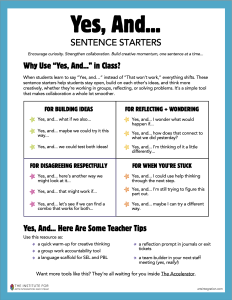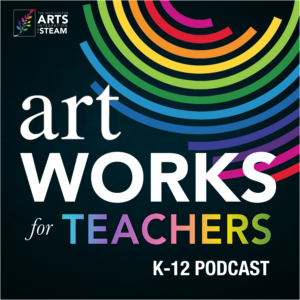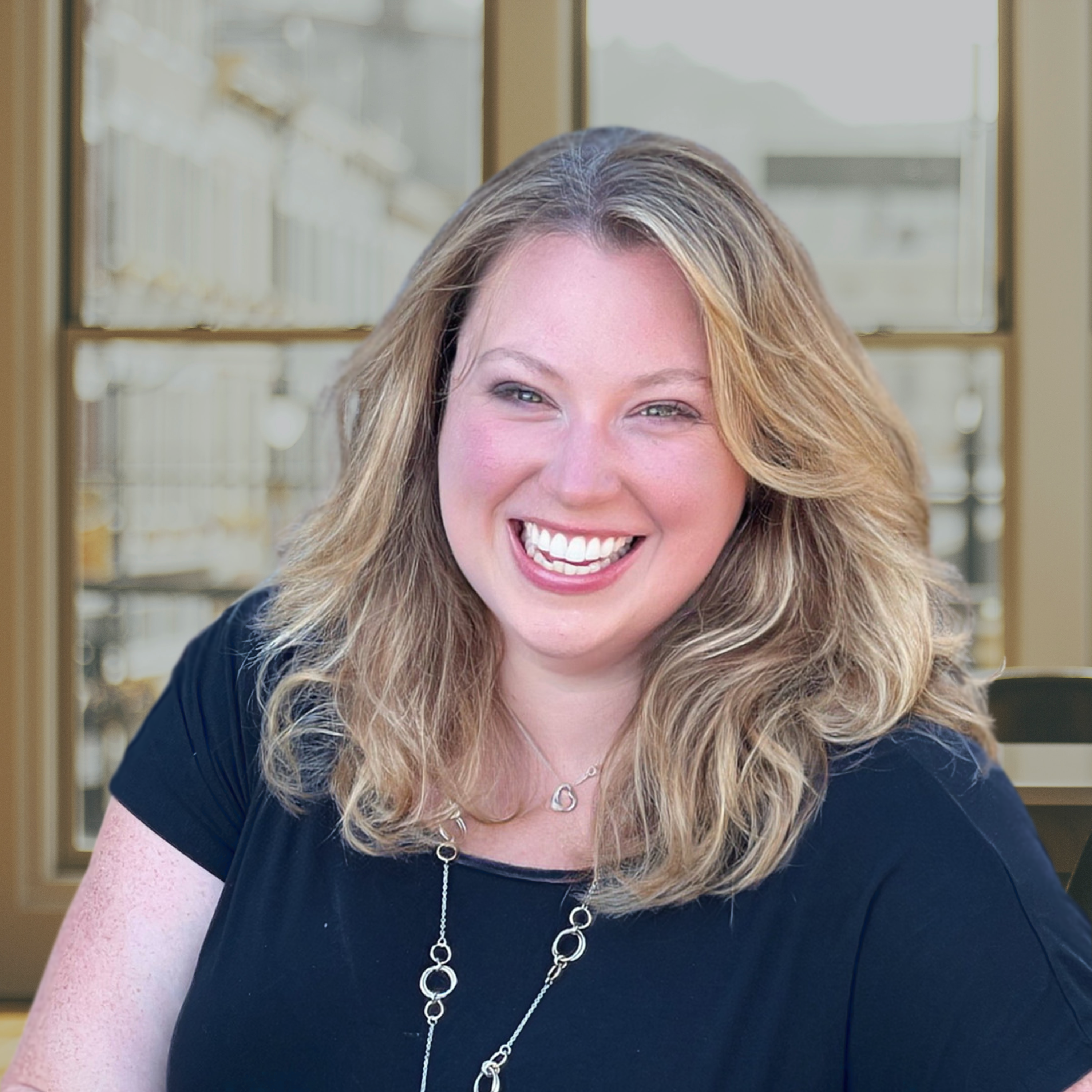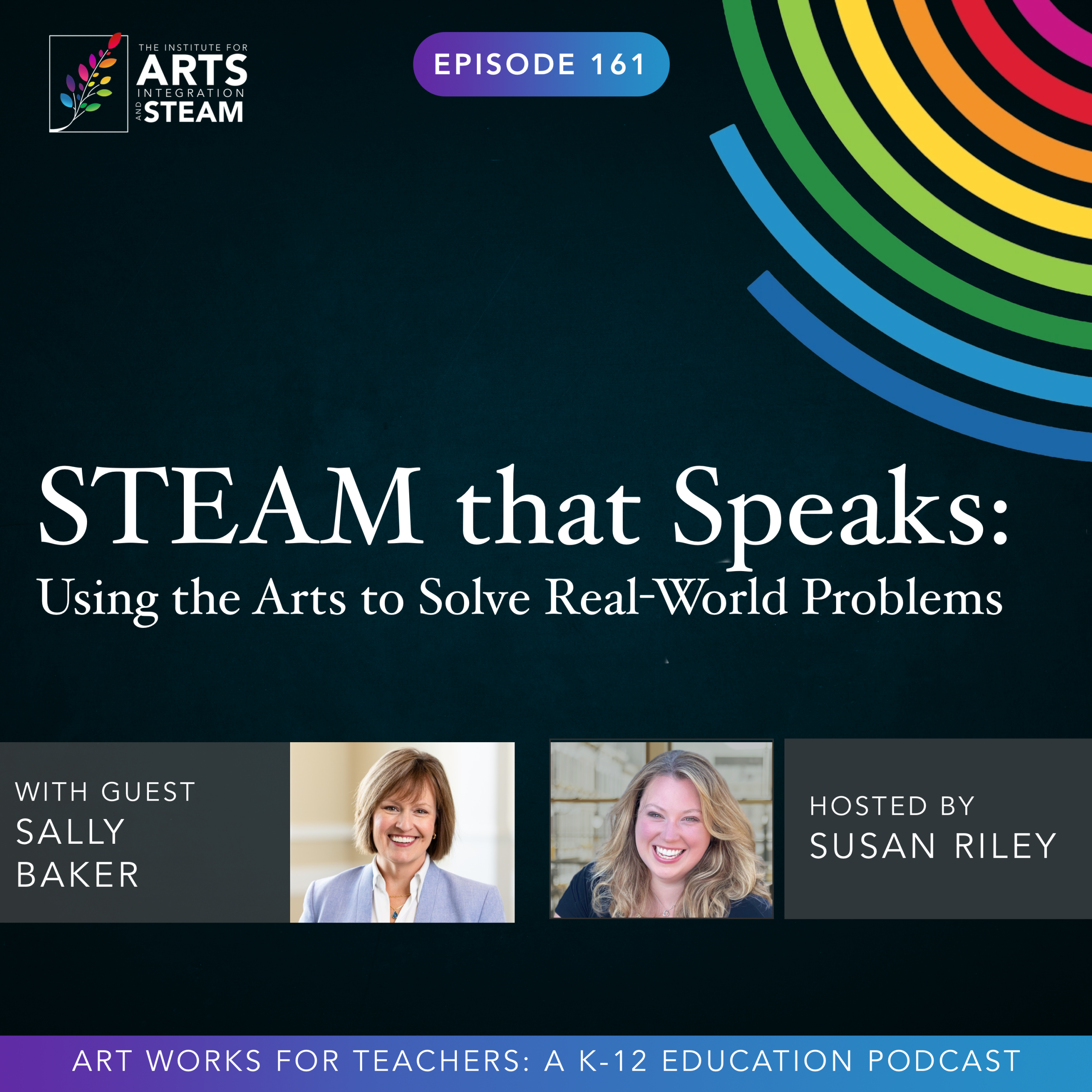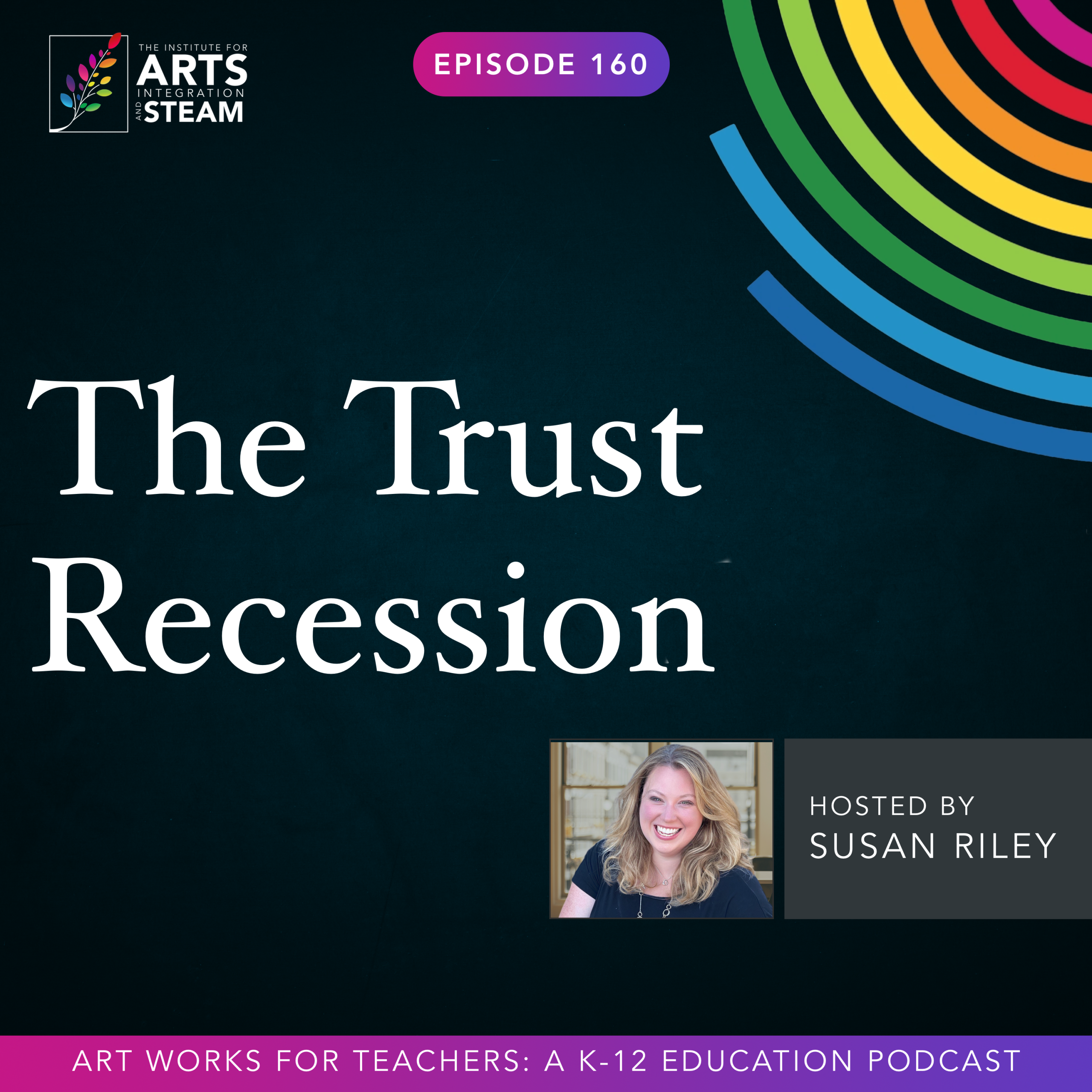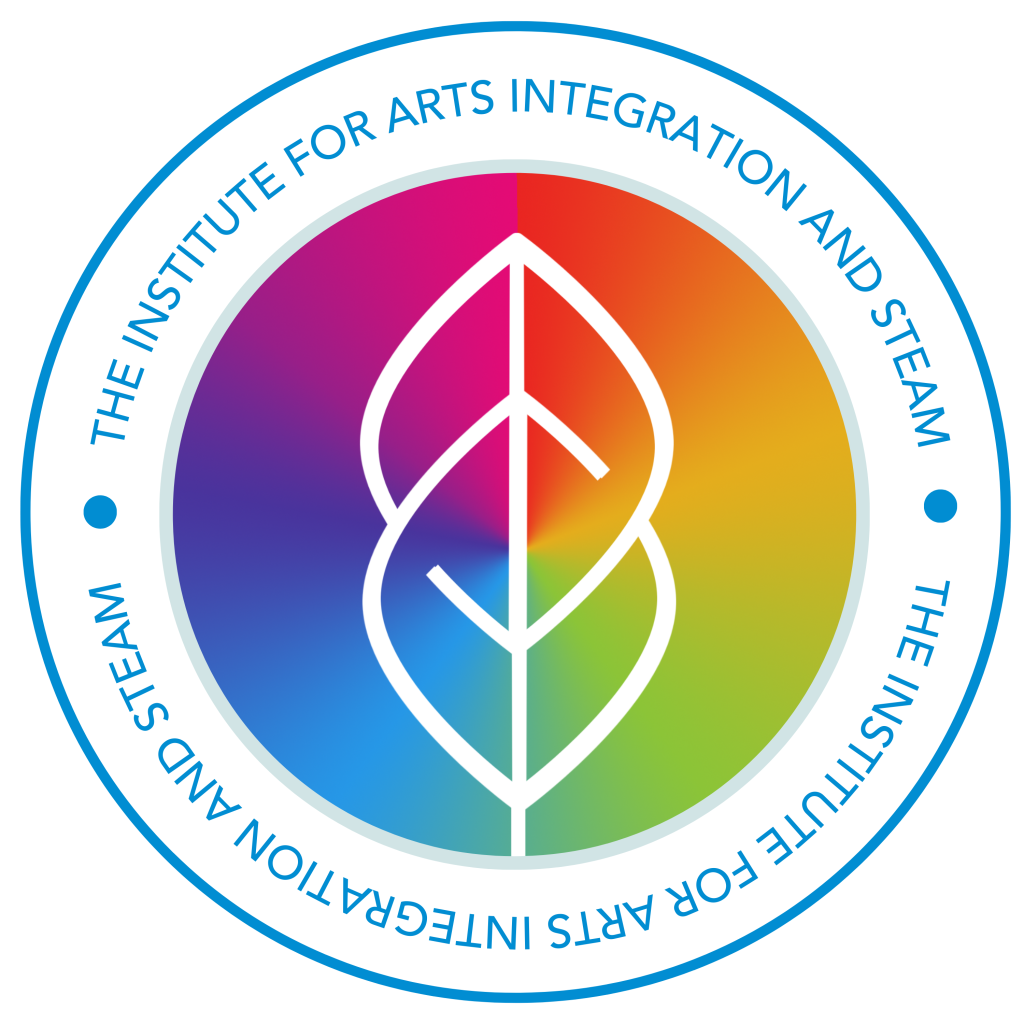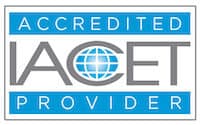If you've ever wondered what improv comedy, creative problem-solving, and health education have in common, this episode will blow your mind. Jane shares her journey from stage to strategy and reveals how Yes, And… is more than a punchline, it's a mindset that can change how we teach, lead, and live.
You'll never look at brainstorming, collaboration, or even failure the same way again.
Enjoy this free download of the Yes, And… Sentence Starters.
Well, welcome, Jane. I'm so glad you're here today.
Jane
Thank you for having me. Happy to be here.
Susan
So for those folks who may not know you, can you share a little bit about yourself and your journey thus far?
Jane
I can, and it's a bit of a wacky one. And it may say, look, I'm going back too far, but it makes sense when you go look back in hindsight. So when I was a fresh faced high schooler, my goal was to be in television and radio because I loved that sort of performing and helping people with information. I loved that. Even going back further as a small child, always performing, everything was a costume, everything was a moment.
So I loved performing from a small age. My father and I used to watch Carol Burnett, know, religiously. So I recognized at a young age that funny was a thing I liked. So taking the funny, then taking the helping people with information. Once I got to college, I was like, well, maybe this isn't it. I had a friend who had a sibling with a traumatic brain injury and I was drawn to the notion of I would love to assist individuals like her continue to lead really productive, thriving lives. I didn't know how to do that at 19 years old. And so I became a sociology and social work major. And from there, I became really excited about all of these ideas and concepts about how the world works and systems and institutions and people. And I love that because I also love the question of, why is that happening, how are, why are people making these decisions? Not on an individual psychology level, but a bigger sociological, all of these different forces at play, making each one of us a quilt of many different colors, interacting with folks of quilts of many different colors. And I was very excited about that. Went into social work for a few years and realized at about the age of 26, I was the most depressed 26 year old I knew because I had the, wanna save the world, but I didn't have the, I can't shut it off and I can't take it personally. So from there, I stepped laterally into health education because I could still help people and through recognizing whether it was a bunch of institutions and socioeconomic factors at play and social factors at play that helped influence a person's health and wellbeing on a psychological, physical, mental, emotional, spiritual level. I liked that because it seemed a little bit, I could step back a little bit, but I was still helping people. Also as a health educator, could, by taking topics that were often uncomfortable or awkward, make them a little more approachable by humor. So again, pulling back. And I did that for, so that was the path that I thought I was gonna be on for the rest of my life until…
One day in 2001, some friends and I were sitting around at karaoke night, like you do, multitasking because we were picking our songs and on the television in the corner was a show called Whose Line Is It Anyway? And we were big fans of that and we said, we should start an improv troupe in our town because there wasn't one. We took a beat and we said, how do we do that?
There happened to be a gentleman who had just moved into town that was friends with somebody else. And he got this group of us together and taught us this thing that's improv, that it's not just getting on stage and being wacky. There's a lot more to it. And he taught us that. And we performed for 15 years in my hometown of Jamestown, New York, which is home of Lucille Ball and now the home of the National Comedy Center. And…
We performed there for 15 years and then we stopped and I joined a comedy sports in Buffalo and I've been performing with them for a number of years. But going back to the first few years after I discovered improv, I had a little conversation with myself of, I wonder if this is a thing off stage because I recognized I thought differently, reacted differently approach things differently with the improv mindset that we were using on the stage in order to prepare to do performances from a comedy level, I recognized there were things that I had to do in order to succeed at that, that I was doing off stage. And so I did a little Google search of, is this a thing? Yeah, it's a thing. Thousands of people are doing this.
So I hooked myself up with them and I, so I found the applied improvisation network from there. I had a friend from improv who said, have you ever checked out the international center for studies and creativity at nearby Buffalo state university? No, I haven't. So I went to graduate studies there and that's how I found the applied improvisation and creative problem solving creative studies track started just take literally taking vacation days and personal days and my health education job, my full-time health education job to go do little gigs on this little side thing, built up the little side thing. And by the time the pandemic came around, I was doing it full-time. And I can't imagine doing anything but this because it involves the three things that have been important to me in my life, humor and a sense of curiosity, that the whole notion.
Performing or helping being in front of people. Performing and being in front of people and sharing information and getting information from them, hosting a conversation and helping people. All those three things I get to do.
Susan
What a cool journey, you're right. It's like it leaves and twists, but as I was listening to him, I thinking, well, sure it does, because that's what we do as humans. That's what creativity is, right? It's a little bit of this, a little bit of that. It reminds me of like a hummingbird, right? That kind of floats from one to the next. So yeah, it makes sense once you pull it all together.
So now you're working with the Creative Problem Solving Institute, right? Can you tell us a little bit more about the Institute and what it does? And you said, sure, there's people out there, there's thousands of people out there doing this. What is this and what is it and what is that a part of?
Jane
Absolutely. The Creative Problem Solving Institute is the flagship conference session of the Creative Education Foundation. The conference is having its 70th birthday this year and the Creative Education Foundation is, you heard me mention the Center for International Studies in Creativity, now known as the Center for Applied Imagination at Buffalo State University. That department and our organization, the Creative Education Foundation, founded by the same gentleman who founded Brainstorming.
This thing called brainstorming with a lowercase b is not just something that people randomly do. It's a legitimate specific process within the process of creative problem solving. That's what they developed. And they created the creative education foundation. And a year after that, the creative problem solving Institute to teach this process and the, the, uh, all of these sort of other aspects and conditions and mindset tools, skill set that are essential for leading a more creative life from a wee person to a not so wee person. And so the CIPSE, as it's called, the Creative Problem Solving Institute, this is the conference that again, has been going out for 70 years and evolving as it goes. And the cornerstone of it is teaching the creative problem solving process. So folks can walk away with a deliberate process.
Now this doesn't have to be flip charts and post-it notes and Sharpies and to do a big fully facilitated brainstorming session. This can be as simple as I'm off to an important meeting, my belt broke, how might I fix this? And it's going through things like, what do I have in my proximity that is belt-like? In what ways might I hold my pants? It's that, it's learning to sort of look at challenges and opportunities through a deliberately creative lens.
And so the conference is a chance to bring folks together from all over the world to teach the process and engage in other programming that only serves to further enrich the creative mindset tool set skillset.
Susan
How valuable is that? mean, especially now, right? And what we're doing now. Now, I just as a side note, I'm gonna dive in more into where we're headed in just a minute, but just a side note. I think I read somewhere that the gentleman who helped to found Creative Education Foundation was one of the original Mad Men. Is that correct?
Jane
Yes, Alex Osborne. It's the O in BBDO.
Susan
Yeah, like, of course, of course he was, right? And that makes sense. I mean, especially with the brainstorm part and what he was trying to do all the way back then. Amazing.
Jane
Yes, it was a product of, and I'm really sort of giving you the very, very, very cliff notes of advertising and educational psychology coming together to say, what happens when we put these together? So just the mere notion of two gentlemen from different domains seeing that they wanted the same sort of output and what would it be like and what would it take to get there? Just that is creativity. Two things together, put together in a new way in order to develop something new and useful.
Susan
Yeah, absolutely. So now I'm so curious about your improv background because, and here's why. So my background is in music education and I love it. But when I was in the classroom teaching music, know, one of the standards is around improvisation. And so I knew, and of course, most of the places that I went, I had to create my own curriculum as teachers do, you know. And so I always knew I had to have an improv unit and I absolutely hated it because I was such a structured musician. You know what mean? Like I read the notes on the page and that is what, and I can perform that in a way that's unique to me. But then trying to teach to your point, a framework around improv and that it's not just throwing spaghetti at a wall to see what sticks, but that there is a framework is so challenging.
I mean it should be freeing but it's somewhat challenging. So I would love just from your perspective from that point of view, how does that improv background help serve you in the creativity training that you do now?
Jane
I'll start by sort of tearing apart improv a little bit. And I should also mention that each improv performer, student, teacher, anybody involved in improv will have a slightly different take on this, which is amazing because we all internalize it and understand it just slightly different ways. But the tenets of improv is I believe them and I practice them are many of them are as follows. And this is not proprietary information, but I should also give great credit to a woman named Kat Coppet, who's one of the leaders in the applied improvisation field and improvisation performance as well. But some of the key tenants are, the first one is the big mantra of improv is yes and. And that is the notion of acknowledging and building.
Some folks also say accepting and building, but in creativity, it really makes sense for the acknowledging. It's saying, I hear that, this is a truth that I can't deny. It's out there. Now, how can I work with it and what can I add to it in order to make it something better? An example I give is that I have been giving for years and she's older now, so she wouldn't do this, but when my niece was smaller,
As hopefully as a 20 year old, she won't say I want to play in the street, but I don't know. But the example I've given for years is if my niece said to me, I want to go play in the street, I wouldn't say, sure, because that's just a yes, right? And it's a little sketchy of a yes. And I might also not say no, because that just creates this conflict. Approaching it with a yes and the yes part is not yes, we're going to play in the street. The yes is
She said she wanted to play in the street. What can I do with that? Rather than just deny she said it. So I can be curious about it and I can say, what I love about this idea is that we're outside, there's room to play. Is it a flat surface? Is that what excites you about this? Is it a hard surface? Is that what excites it? Or do you feel like we need more room from where we usually play? I can find out more information about what she loves about this idea and then I can build on it. I won't necessarily, we'll play in the street and it might be, we'll play in the driveway and. And so it's not accepting, meaning going with something as is, it's acknowledging it and trying to build it into something agreeable and workable. And so the yes and on the stage would be if I were starting an improv scene and I were, you know, miming, throwing a pizza or something like that, trying to establish to my scene partner that we were in a pizza restaurant, if they came in and said, well, it's great here digging ditches on the moon, that's completely, you know, it's not acknowledging anything that I've brought to the table. And so I might say, well, okay. however, it might be interesting if it was, there is suddenly a pizza restaurant set up like a food truck for the folks that are digging ditches on the moon. Maybe that's what it is. That's the yes ending.
But it's not negating, it's finding what's available to you with which to work. That right there is a direct connection to creativity in terms of rather than consistently fighting against, it's saying, all right, this mountain is here. Now what? And finding ways to work with it, work through it, work around it, work under it, go back a couple steps, find a different route so you don't hit the mountain in the first place, see what it might be. And so the yes and is, is not leading with no. It's basically being the opposite of every comment section on the internet. It's not leading with no. It's basically saying what I like about this idea, what I'm interested about this idea is what's curious about, what I'm curious about this is. So it's, that's the yes and. There's also communication and being able to communicate in 360 degrees through mind, through voice, through physicality, being able to articulate your needs and your wants, your wishes, your vision, being able to clearly articulate that in order to be more creative, you need to be clear about what your vision is, about what your situation is, about what your goal is, about what your constraints are. So it's creating that full communication picture, communication to yourself or to others. There's also the notion of making your partner look good, which is taking the emphasis off the individual and putting it on the we or putting it on the challenge as a whole. It's finding what white we do in order to find a great solution. And through that, there may be part of what's called deferring judgment where you're not judging others, where you're not having that agenda clash. Think back to yes and because some of these principles interconnect. And sometimes when you're being collaboratively creative, you have to set your agenda down because something else might come forth that maybe is better or more workable through that divergent approach of let's put all ideas on the table before we judge. Divergent, all of the ideas are out there and convergent is now let's choose that what's called a dynamic balance that everything and then choose is a hallmark of the creative problem solving process. And that is what allows it to work because you're not creating and editing at the same time. You're not putting gas and break at the same time.
It's the trick or treating part. If you're going out and filling your bag with candy, then coming home and sorting through it. And so that's the make your partner look good piece. There's being willing to fail and be imperfect. And I love what you said about that, that it scared you because creativity and improvisation are scary because they are imperfect and they are unknown. And what's scarier than that opening up that dark room in the attic, right?
What monsters are in there? It's unknown. We can't see it. we, we as humans, going back to my sociology and anthropology, right? We exist from a basic sense of desire for safety and survival. And so anything that can threaten that psychological, physical, emotional, positional, hierarchical status, anything that can threaten that safety and security is scary and we try to avoid it or control it. And creativity and improvisation invites it in. It has a party in that dark room and sort of turns on little lights at a time, but it's scary because it's unknown and you might fail and you might mess up. You might have a misstep and we are often conditioned to want to avoid that failure and misstepthat we will avoid the thing that might cause it, the creativity or improvisation that could lead us to a big aha or woohoo. And instead, just lock that door to the attic instead.
Susan
Yeah, and so much of what you've shared is not, it's not strategy, right? It's not like here's the how of what we're doing necessarily. I mean, there are tenets to that, but it's really more of a mindset. So, and I know that you are passionate about developing a creative mindset instead of trying to look for a sequence of steps to help you be more creative. So talk to me a little bit about creative mindset. What does that mean for you? How do you cultivate it and how can we bring that into our classrooms?
Jane
Well, there's a few pieces to the creative mindset in addition to some of those improv principles. I sometimes blend them, but let's go to strictly the creative problem solving or creative mindset. One key piece is what I just mentioned about the separate the ideation from the evaluation. And that is as simple as, again, just you might have on an everyday, but let's start with an everyday, not even in the classroom yet or not even in a professional setting on everyday basis. And maybe, you know, maybe there's things happening here in my house and yard that are going to prompt this, but let's say that you're looking and decide I got a new thing to do with the garden space. And so there may be differing ideas. And so you can say, what are all of the things that we may be able to do? And instead of judging them one by one, get all of the ideas out there. This is the principle and process of divergent thinking.
And divergent thinking is again, you're going for quantity. You are striving for wild and wacky ideas because if you're looking for the known and safe and simple, then why are you looking for some creative approaches? So the wild and the wacky can always be tamped down, right? And so, and wouldn't it be great to sort of play with those? And also a super wild and wacky idea may inspire a maybe not so wacky, but pretty doable idea.
So we go for quantity, of of lots of ideas. How many ideas can we put forth into what we can do in this new garden space? And that analogy is if you were having a wedding, prom, whatever, a special event, you hired a photographer and that photographer said, okay, great, I'm gonna take five pictures and you can choose from that, right? Panic? Uh-uh, I know my eyes are gonna be closed in four and a half of those.
And so I need more from which to choose. And so if you look at it that way and throw out many ideas, wild deferred judgment of self and others, that doesn't mean just saying, know, that wouldn't work or we tried that. Don't do that because that's not deferring judgment, but also meeting some ideas with a that's amazing and some ideas with a, okay, that's judgment.
Right? Because somebody's like, well, why didn't I get that that's a great idea? So when we're putting out lots of ideas, let's judge them equally in that they're all fantastic for the moment. And so having that openness of idea and then from there applying criteria, like what's our goal? What's our objective? What's our budget? What's our constraints? What's time, space, physics, reality? Applying those criteria to that big smorgasbord of ideas or notions set forth in the divergent thinking. Now we have a greater pile from which to choose of a potentially workable and new and interesting idea. But what we tend to do as people is we tend to judge ourselves. First of all, any idea that comes in our head, we give ourselves 12 reasons why it won't work. and so put that away. So that divergent convergent balance, everything's great until we choose, right? And then it's just, it still might be great, but it's not what we're gonna choose. So that's something really simple that you can get yourself in the habit of doing to boost your creative mindset is to separate that divergent and convergent thinking. Use whatever analogy you'd like to use. The trick or treating is the one that resonates with a lot of folks. Yeah.
Susan
Yeah, I have a quick question about this because I'm thinking from the teacher's perspective. Are there any limits to the idea generation process? For example, because I can already hear some educators going, that's really overwhelming if we just don't put any limits or if I'm teaching kindergarten and they're like, you know, ideas for the next 30 minutes. So do we ever put limits on it, like a time limit or do we just say, you know, keep going until you can't anymore?
Jane
Whatever works for you and that's going to be different depending on the situation. But if a kindergarten teacher wanted to tell their students for the next three minutes, all of the ideas you can think of, go and time it down. that's everything is possible. Every voice is heard. Nobody's laughed at, right? Everything is workable. And if somebody says, no, then the teacher might say, but every idea is good right now, diverging, we're opening up, everything is possible right now, because that's one separate piece of being creative, one separate piece of trick or treating. When we go and ring the doorbells of the the houses on Halloween, we're not standing there looking at our nougat to skillet ratio, skittle ratio, right? We're looking there and we're just basically get the candy in the bag and we'll sort it, we get home. And so that's what we're doing when we're diverging.
And the lovely thing it does is it reinforces that divergent thinking, that space where it is non-judgmental in order to allow those ideas to bud, to bloom. And then have the convergent when we have, okay, now of all the ideas, which ones can we, activity can we do in five minutes? Or, you know, which thing that we want to build in this little play space, which one fits between the room and the ceiling, or which ones do we already have supplies for? So you can apply that criteria to help them learn how to select and choose and narrow down. And so it can be overwhelming, but you can absolutely set time limits. You can also set other kinds of limits because creativity does thrive within a constraint.
As a matter of fact, when I'm working with folks within a group, I'm asking them, if I'm facilitating them and I'm asking for all of the ideas, it's very overwhelming. But that if I say some things like, for example, I want five ideas that prominently feature the letter right? It sort of focuses the ideas. Or if we're doing a warmup, because that's important, before you're really trying to solve the real problem, we do a warmup. And one of the warmups is how might we improve this desk?
And you'll hear things like, paint it, put a plan on it, things like that. But then it's through each of the five senses. What's one way of improving the desk? Something connected with sight, with sound, with touch, with feel, with taste. And people are like, taste? Yeah, I didn't say the desk had to taste good, but from the idea of taste, how might you improve the desk? And all of sudden it's like secret chocolate stash under the floorboards. And so by really giving them sort of prompts, you can that ideas without constraints can get overwhelming, it can feel confusing, it can feel hard. So by practicing putting constraints on ideation is even more of a fun challenge.
Susan
I I love this. also think you keep coming back to the idea that all ideas are workable and that that is this hallmark of yes and and many times when I have facilitated work with teachers using yes and the assumption is that yes and in terms of I'm going to accept the idea as is and move on and build off of it. But I love this framing that it is that that's not necessarily the case. It is that that idea is something to work off of and therefore allowing for that divergent and convergent thinking. Before I let you go, because I cannot believe our time is almost over already. This has been such a fascinating conversation. I think I could talk to you for hours. I also know that play is a hallmark in your work. So talk to me as we close out, talk to me about how play can be used to solve serious problems because I know, you know, we talk about, yeah, play would be great, and that might work in an elementary school classroom, but then we start working in team dynamics and people at a classroom professional level. so and so down the hall is just always such a negative Nancy, and they're always saying no to everything. How do you bring play into serious problems like those?
Jane
Excellent question. And it's going to differ on the situation and there's conflict and then there's danger conflict, right? I would approach a situation like that, and I have approached a situation like that with a few different lenses, that play, engaging folks in a playful activity allows people to be on a different playing field than they are in nine to five or they're no longer Nancy, negative Nancy down the hall teacher, they're now part of this group. The example I'm gonna give you is one of my favorite tools that I've been exposed to and have been lucky enough to learn and do. It's the Lego serious play model. And the folks from strategic play out of Canada have been great mentors to me in this and were the teachers they taught me. And that whole notion is really bearing it down to a few sentences, it's creating a physical, visible representation of something that exists not in the physical descriptive world. For example, one exercise I would use is build a model of what the communication is like on your team. And so you have to use different parts of the brain, right? In order to express, to process and express an idea, a concept into a physical form. And now you can explain it through this form. Pictures, photos, images is another way to do things as simple as which photo card here expresses how you feel about this project. And you might put up a picture of a bumblebee and…
You could say I feel it because I feel like I'm already going fast and you know I'm buzzing and people look at me and think I'm scary But I'm really just trying to do my job, you know And there's a way that you can explain feelings and concepts through an image or through a model That gives more context to the listener Than just it's you know, it's Jane and Susan talking again now. I'm be I'm having more at my disposal to explain what I'm thinking and what I mean, because maybe I might not choose the right word. And so play can bring forth greater context and investigation to tougher situations, tougher, tougher feelings. And it can be done in a way that's in a removed, safe, outside force in terms of learning how to, learning how to play an improv game together you're still gonna be practicing communication collaboration, but it's not about who is organizing the summer schedule. Instead it is you're working on some basic skills about who is figuring out how to get us, you know, from one side of the room to the other without using our left foot. That's, you're still practicing those skills, but in a safer, non-important concept. So play allows you to do that, allows you to explore the feelings, explore the concepts outside of them.
Susan
Yeah, and I don't think we get it enough. So it becomes, it's almost a novelty to be able to play in order to work through those things. I think it's so important. Jane, thank you so much for joining me today. For those who would like to stay in touch and maybe find out more about you, your work, or even the Institute, how can they go about doing that?
Jane
Absolutely. Well, we are, we're having the Creative Problem Solving Institute is happening June 22nd through 26th in Buffalo, New York. Registration is still available. We'd love to come join, have you come join us in person. You can join us for one day, two days or all four days. So that's one big way. You can also reach out to me at Jay Fisher, Fisher with a C, F-I-S-C-H-E-R, like Jenna Fisher from The Office, not Carrie Fisher from Star Wars. So it's J-F-I-S-C-H-E-R at creativeeducationfoundation.org. Super long email, but worth it. so I'm happy to have you find me that way. And what I do through the work with the Creative Education Foundation and in my own personal practice, I love to do work with individuals, groups, on a coaching, training, facilitation way and helping you find and deal with your challenges and opportunities with more positivity and creativity on the way to better results.
Susan
Yeah, absolutely. We will put all of that in the show notes. And I think, you know, for those administrators out there who are listening right now and thinking about what PD am I going to bring to the beginning of the school year, I think you need to reach out to Jane. think today is just a small little snippet of the things that she can bring for you and your team. So.
Jane
Absolutely. And I want to say that we do both virtual and in person.
Susan
Fantastic, even better. All right. Well, Jane, thank you so much again for joining me and thank you for bringing creativity to as many people as you can.
Jane
My pleasure, Susan. Thank you for having me and have a creative day.

